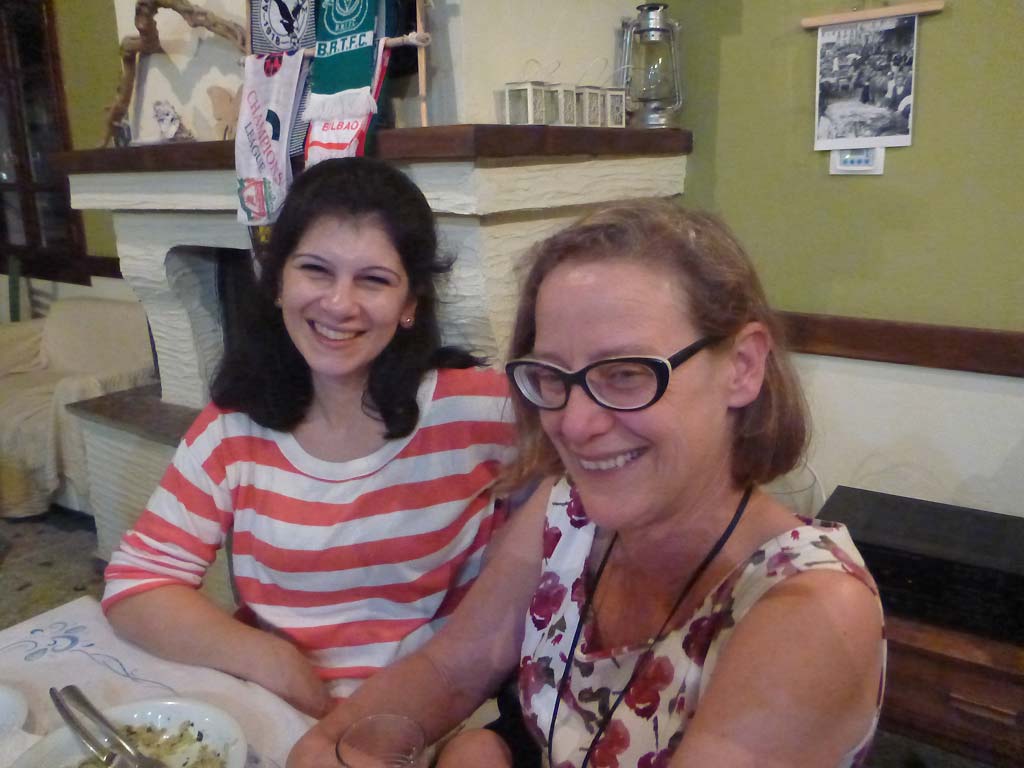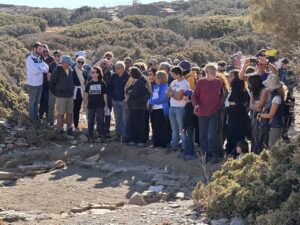Specialist Work – Dr Maria Roumpou – Residue Analyst

and Maria Roumpou, Archaeological Residue Analyst
Residue analysis focuses on the extraction and interpretation of organic remnants found within artefacts at a molecular level. Chemical analysis of organic residues has greatly expanded in the last three decades and widespread evidence for the survival of organic residues associated mainly with pottery vessels has been demonstrated, although advances are shown in the analysis and recovery of organic molecules from several categories of archaeological finds. Careful processing of any remaining residue either visible (infrequent) or absorbed can provide an understanding of the usage and function of artefacts.
These remnants may derive from the processing/serving/ storage/transport of natural substances (animal and plant lipids, resins etc). Organic remains of natural material that were applied in the surfaces to improve performance or as adhesives (beeswax, resins, bitumen, tars) have also been detected in archaeological material. It is even possible to see that some vessels were actually glued together back in antiquity using resinous substances. (Hannah: I like to picture people back in prehistory sticking together a favourite amphora or storage pithos that somehow broke …we really aren’t so very different many years later!)
Unfortunately, the composition of organic remains in archaeological material is complex and it should be anticipated that transformations of the original natural material would have occurred during usage and burial (i.e. cooking, charring, exposure to light, bacterial action, oxidation and hydrolysis), but also due to post-depositional treatments (i.e. handling, storage). The above render identification of residues preserved difficult and their assignment to a specific source should be attempted with caution.
As Dr Roumpou explained, ceramic material is usually used for this kind of analytical approach due to a variety of factors, including their ubiquity in the archaeological record and also their importance in archaeological discussions. The trait however that makes them an ideal substrate for the application of molecular techniques is their ability to retain residues of the substances processed in them; it has been demonstrated that the inorganic ceramic matrix absorbs residues and affords protection to enable preservation over long periods of time.
Information provided through residue analysis can greatly assist in better understanding of vessel use and of relationship between function and form. Besides, it might provide insights into past societies and help to elucidate issues related to subsistence and diet and also socio-economic conditions during different eras.
The samples (usually ceramic sherds) are wrapped in aluminium foil unwashed; the traditional pottery washing stage will have to wait, if finds are intended for organic residue analysis. Washing might dislodge possible visible residues (or crusts), whilst handling of specimens and storage in plastic bags could promote post-depositional contamination from skin lipids or hand creams, phthalates etc. It is very important to prevent any modern contaminants, which could compromise the results, from contacting the surface of the artefact; therefore it would be advisable to use gloves and handle the artefacts as little as possible. The protocols utilised for organic residue analysis are destructive, although just a small amount of ceramic powder is being removed (1-2 gr).
Last but not least, it is really significant to have a good understanding of the context within which the artefact was found; this might help in placing the results into a wider context by answering specific questions.


